Tax appeal is the most important campaign for our NFP clients. It’s a time to generate revenue when the generosity of the public is at its peak. But how exactly do you convince potential donors to part with their money in exchange for a boost on their return?
Well, the answer is simple, you need engaging content, and your campaign landing page is the hub of all your assets during tax time.
To help you produce an SEO-friendly tax appeal landing page, we’ve listed five tested and proven techniques to help you generate improved organic results.
1. New Page vs. Existing Page
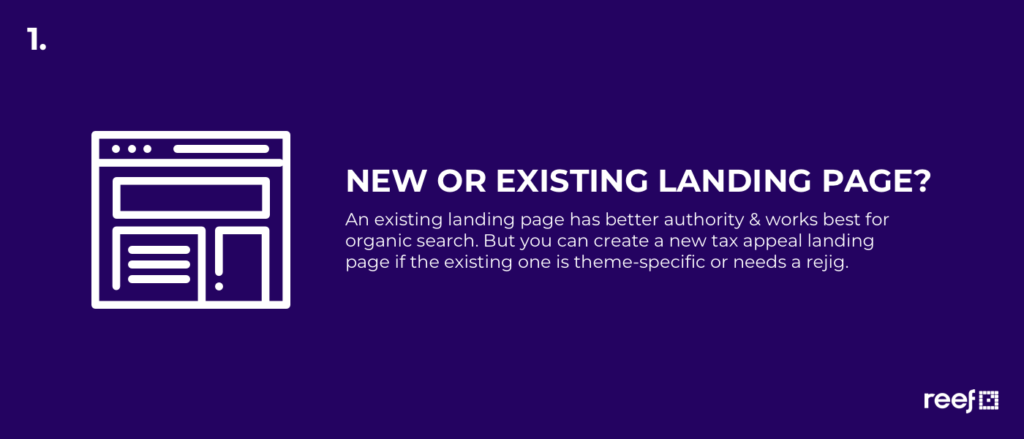
The first question to bear in mind is whether you’d like to start fresh with a new landing page, or revise the copy on an existing page. The choice you make should depend upon which traffic channels you intend to target.
If organic traffic is one of your target channels, and you’d like your page to grow its authority in organic search results, you should strongly consider updating the content on an existing page, or creating a new page as part of a long-term organic strategy.
There’s a few reasons why an existing page works best for organic traffic:
- Page Authority: It takes time for new landing pages to build authority and rank in organic search results. You’re looking at anywhere between 3-12 months.
- Competition: During tax appeal your competitors will be targeting the same keyword combinations as your organisation, which means new pages might not have the authority to compete against older, more established pages.
- Featured Snippets: High authority pages have a better chance at ranking in featured snippets, which will provide your tax appeal campaign with optimal visibility if the page ranks.
If your page is too theme-specific or you’re not sure you’d like to reuse the last page for your current campaign, that’s okay! The approaches below pertain to updating older pages, and creating new ones. So let’s see how you can optimise your page to improve your SEO in this campaign, and grow your organic search presence for next year.
2. Use the Hero & Challenge Formula
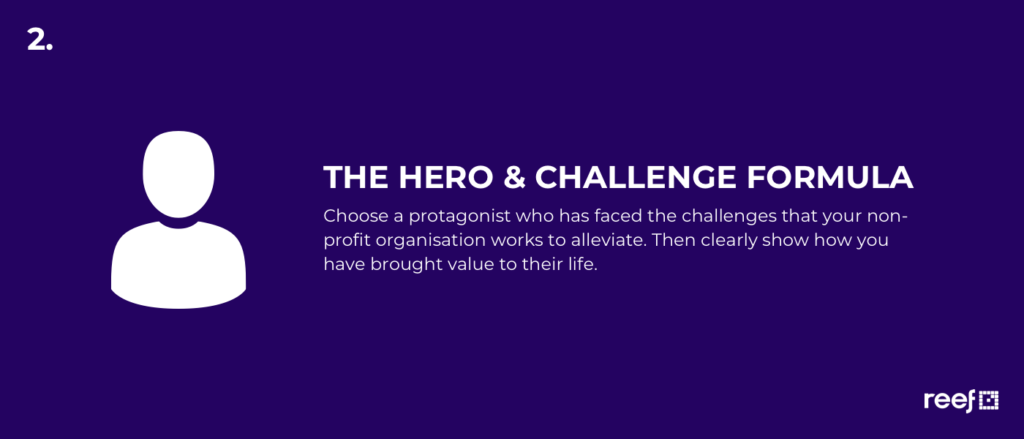
Everyone loves a story, and every good story is focused around a strong hero, and the challenges they must overcome.
Thousands of tax appeals are executed around Australia simultaneously. As a marketer, your goal is to tell a story, within your space of the NFP sector, that will resonate with potential donors. You have to stand out from the crowd and pull the heartstrings if you’re going to generate leads and conversions.
Research by One Spot shows that stories activate a process called neutral coupling in the brain that converts the content into new ideas and experiences.
Choose a protagonist, who has faced the challenges that your non-profit organisation works to alleviate. Then you need to clearly show how you have brought value to the hero’s journey, which has brought them safely to victory on their journey.
This story should be clearly told on your landing page, leveraging Heading 2 tags to outline the hero’s journey.
One Spot also found that 79% of readers will scan the copy, which means your headers must contain the essential ingredients of the story, as well as the desired call to action to reach two thirds of your audience.
3. Target Keywords at All Stages of the Customer Journey
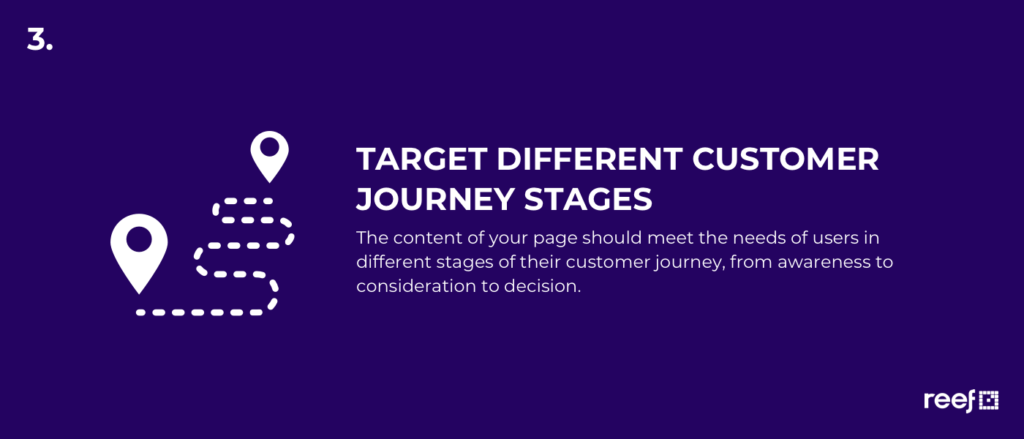
End of financial year is an interesting time from a customer value journey perspective. When putting together the keyword strategy for your landing page, remember to target more than “tax deductible donations”.
Consider the intent of different users searching at this time of year, the questions they may have, based on their stage on the customer value journey.
Consider the following search queries:
- How do tax deductible donations work – Awareness
- Best charities in 2019 – Consideration
- Donate to help children in poverty – Decision
Can you see how different the intent is at each stage of the journey? This means the value your page provides should meet the needs of users at all three stages.
Let’s take a look at how you can achieve this.
Targeting Users for Awareness
As a keyword, “tax deductible donations” does not offer clear user intent, despite a high search volume (1,300 per month for Australian users in 2019). In the awareness stage, you will be targeting two types of users:
- Users who want to increase their tax return, but want to know if donating is a good strategy.
- Users who know they want to make a tax deductible donation, but don’t know which cause or charity to support.
You might target these keywords for the awareness stage of the funnel:
- Tax deductible donations
- What donations are tax deductible
- Tax deductible donations limit australia
- How do tax deductible donations work
Your page should include enough information to let users know how tax deductible donations work, and basic facts to help them decide that donating is a good investment to increase their tax return. This generates awareness about tax deductible donations as a financial activity.
For those users who sit in the second category we mentioned above, your story and supporting content must be enticing enough to interest them in your organisation. This generates awareness about your unique selling proposition as an NFP.
Targeting Users for Consideration
Consideration stage users know they want to make a tax deductible donation, but they don’t know which charities or causes they’d like to support. You need to offer users details about the projects your organisation runs, and how they have aided the journey of your protagonist.
Let’s use the example of Elijah, a digital marketing manager for an NFP that helps children in poverty. The NFP accepts general donations, but also offers child sponsorship as a program, the very program which helped the protagonist Olivia remain in school.
The landing page tells Olivia’s story, about how her mother was killed by malaria when she was an infant, and her father can’t afford to send both her and her brother to school.
The NFP is known to her village, and was able to provide Olivia with funds from a child sponsor. The sponsorship has paid her school fees, and provided her with all the essentials she needed to continue her studies. She has recently graduated from primary school, and is due to start secondary school.
Elijah might target these keywords for the consideration stage of the funnel:
- Charities which help children
- Support children in poverty
- Help end child poverty
- How can we end child poverty
- Help children in poverty
Elijah’s goal is to convince users of two things:
- Ending child poverty is a cause worth supporting, because the NFP made a difference to Olivia’s life.
- The NFP is making an impact that the user wants to be a part of, by either making a donation or signing up as a sponsor themselves.
The page must help users consider their options, and sell the story and value to be part of the shortlist in the decision-making phase.
Targeting Users for Decision/Conversion
At the decision making stage you’ll be focusing on the list you’ve built from the previous two stages, as well as additional “donation” keywords. You’ll need action-oriented keywords to prompt the user to make a decision and convert.
Elijah could focus his decision stage keyword list around the below search queries:
- Donate for tax deduction
- Donate tax deduction
- Donate for tax write off
- Donate to help children
- Donate to children’s charity
- Donate to help children in poverty
You may find that keywords for the decision-making phase are lower in search volume. This can be misleading. Lower search volume often indicates higher intent, particularly if you’re dealing with long tail keywords. This means they’re closer to making the decision to convert.
4. Optimise the Landing Page for SEO Best Practice
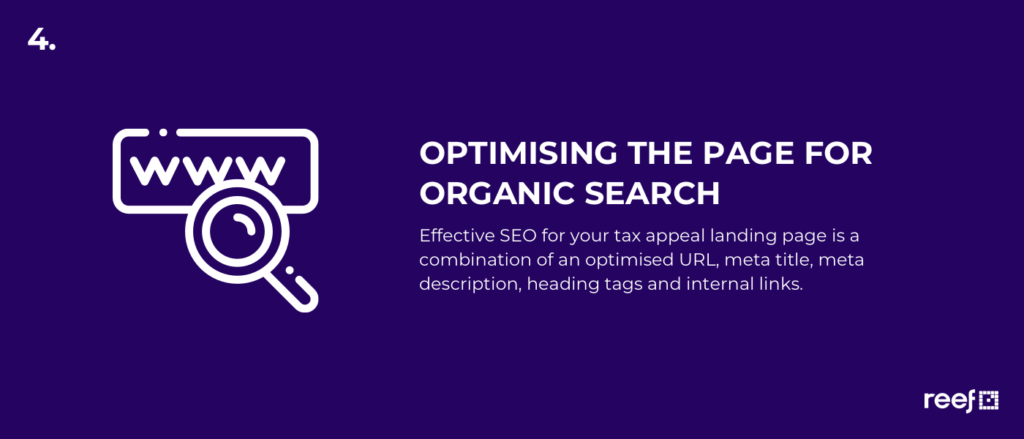
Once you’ve assembled your keyword list, you’ll need to ensure your landing page meets SEO best practice.
Not sure how to create landing page copy? We have a useful tutorial here, which you should read before proceeding.
Optimising a landing page is an activity where you’ll strategically position your keywords throughout core on-page elements. You’ll need to optimise your:
- URL
- Meta Title
- Meta Description
- Heading 1 (Page Title)
- Heading 2 and 3 Tags (Subheadings)
- Internal Links
How to optimise your URL
The URL is the first interaction your page has with the Google bot, so it has to convey what your page is about using one of your primary keywords.
Elijah needs to create a new page, but wants to reuse the landing page for next year’s tax appeal. To do this, he’s decided to use the following URL:
https://www.yourorganisation.com/appeals/tax-appeal/
The URL is generic enough that it can be populated with new copy the following year, and the Google bot will be able to associate it with related awareness and decision level keywords.
How to optimise your Meta Title
Within the meta title you have approximately 75 characters to convey to Google and users what to expect on your page. You should include 2-3 priority keywords as well as your brand name for optimum visibility, separated by pipes for a neat appearance.
Elijah has chosen to optimise his meta title like this:
End Child Poverty | Donate for Tax Deductions | Your Organisation
In 66 characters Elijah has effectively conveyed the theme of the appeal, the desired conversion, and the brand name.
How to optimise your Meta Description
The meta description is a snippet of your landing page, which describes to users what your page is about.
Include 2-5 relevant keywords because these will be bolded if your page appears in a Featured Snippet result. Be sure to keep your description below 160 characters, or it will be truncated in search results.
How to optimise your Heading 1
The Heading 1 or (H1) is the title of your page; it’s what sets the theme for your page. It does not need to be a duplicate of the meta title, but should be relevant, as Google will read the association between both tags.
We’ve seen many NFPs either opt for a generic title like “Tax Appeal 2019”, or a completely thematic approach, such as Poverty Ends Here. Using a combination of both is the best approach to maximise your visibility, including 1-3 keywords.
Elijah, for example, might use this copy as his H1:
Help a Child in Poverty: Donate and Boost Your Tax Return
How to optimise your Heading 2 and 3 Tags
An optimised landing page needs heading 2 (H2) and 3 (H3) tags. H2 tags are subheads which walk the user through your story. H3 tags are dividers which highlight points of interest or topical shifts within a chapter.
Remember that users may not read your entire page, and skim your copy for the key points. H2 and H3 tags should provide an overall summary of your page, and include your primary keywords.
How to optimise your Internal Links
On campaign-specific pages, you may not want to include too many internal links. But, that doesn’t mean other pages shouldn’t link to this landing page itself. Publish blog posts promoting your tax appeal, and add a relevant call to action with a link to your landing page.
Add the link to a section of your copy that calls the user to action for a hard sell, or subtly where you mention related information, perhaps about your hero, for a softer sell.
5. Create a Clear Path to Donation
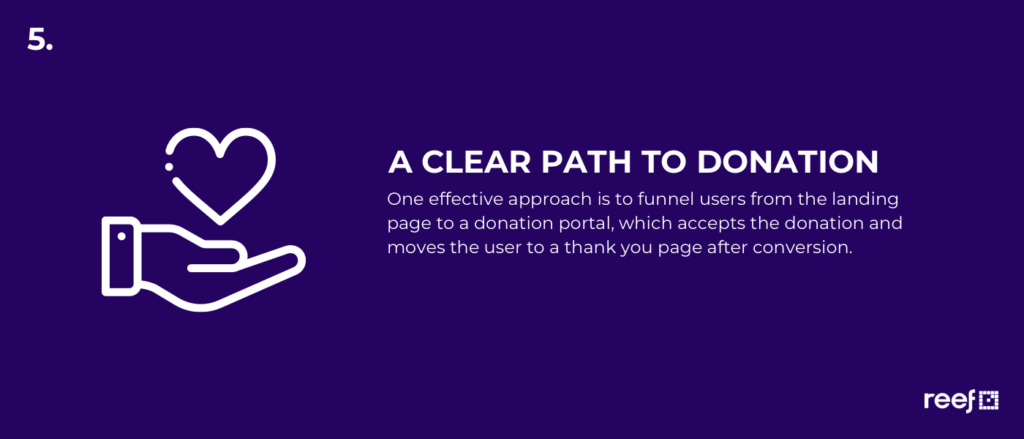
Keep your conversion pathway in mind when designing or updating your landing page. How do you guide users to make their decision? Where do users go once they decide to donate? The path to donation should be as clear to you as to your users, otherwise you will leak leads and lose conversions.
Tax appeal can be the perfect time to revise your cart process or donation portal.
One effective approach is to funnel users from the landing page to a donation portal, which accepts the donation and moves the user to a thank you page after conversion. It’s easy to track, you can use the thank you page for additional communications to enhance the experience and the structure is neat, which the Google bot will love. Most importantly, however, users will know exactly what is required at each step of the journey.
Optimise for Success This Tax Appeal
Not sure if your tax appeal is up to scratch? It’s not too late to make revisions or create something new if you can allocate the resources. Otherwise use your data from this year, update or create a new landing page, and optimise for success for June 30th next year.
Good luck!

